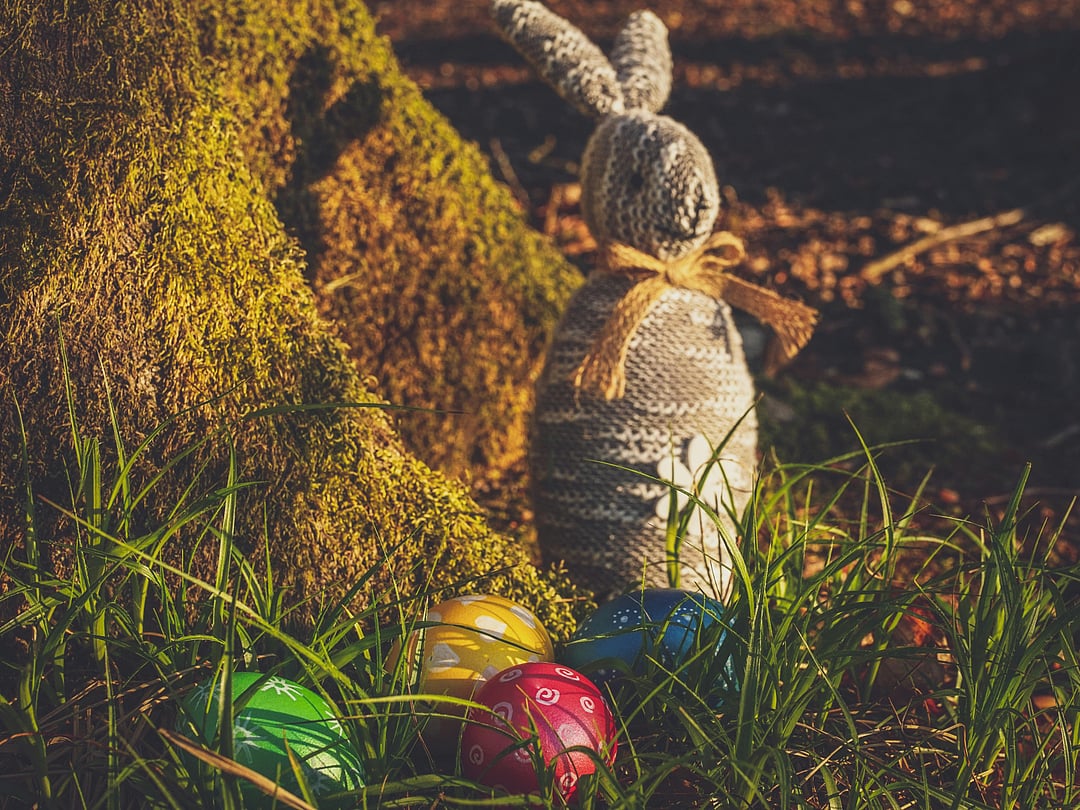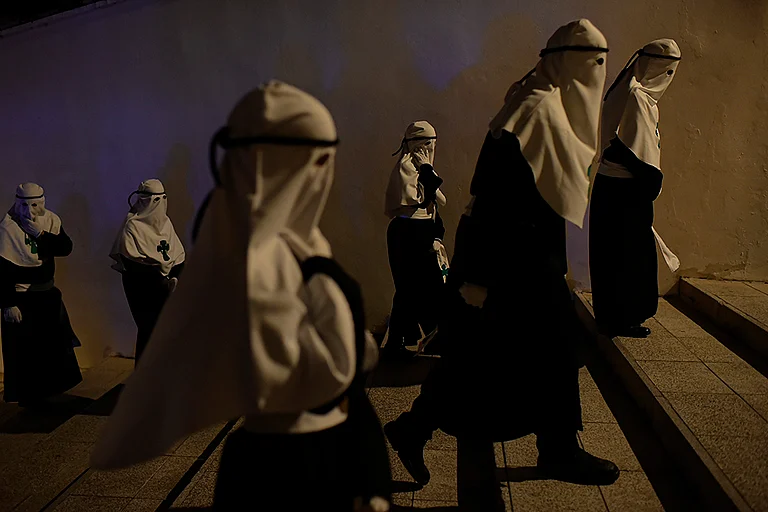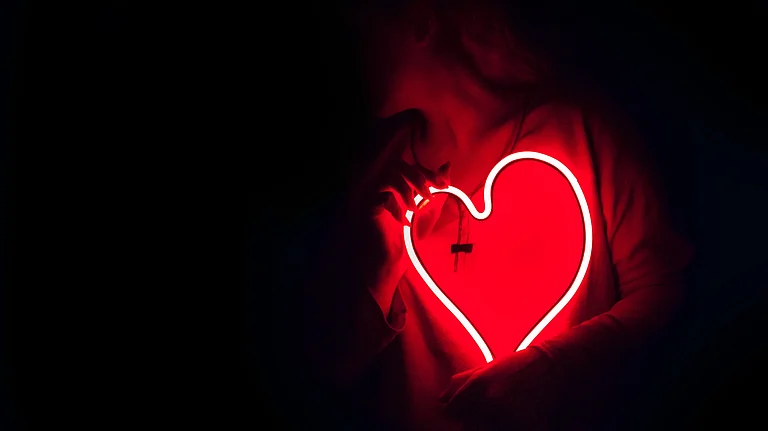Easter traditions and symbols have undergone evolution over time, with some enduring for centuries. While Easter holds significance for Christians as the commemoration of Christ's resurrection, many customs associated with the holiday are not directly mentioned in religious texts. The Easter bunny, a prominent secular symbol, is said to have been introduced to America by German immigrants who brought tales of an egg-laying hare. Decorating eggs has historical roots dating back to at least the 13th century, and the tradition of the Easter parade traces back even further. Additionally, modern additions like Easter candy contribute to the celebration of this springtime holiday, as per History.com.
Here are the diverse elements that form the rich tapestry of Easter traditions and symbols, each contributing to the vibrant celebration of this springtime holiday.
Easter Traditions And Symbols
1. Easter Bunny

The Easter bunny's origins remain unclear, as the Bible doesn't mention this mythical creature known for delivering decorated eggs to children on Easter Sunday.
Nevertheless, the Easter bunny has become a significant symbol of Christianity's most important holiday. Rabbits, recognized for their prolific breeding, have long symbolized fertility and new life.
According to some accounts, the Easter bunny made its debut in America during the 1700s, brought by German immigrants who settled in Pennsylvania. They introduced the tradition of an egg-laying hare called "Osterhase" or "Oschter Haws," with their children creating nests for the creature to lay its colored eggs.
Over time, this custom spread across the United States, evolving to include chocolate, candy, and gifts in the Easter morning deliveries. Decorated baskets replaced nests, and children often left carrots out for the bunny in case it grew hungry from all the hopping.
2. Easter Eggs & Egg Hunts

Easter, a religious holiday, incorporates customs like Easter eggs that may have pagan origins. The egg, symbolizing new life, has been tied to ancient pagan festivals celebrating spring. From a Christian standpoint, Easter eggs symbolize Jesus' emergence from the tomb and resurrection.
Decorating eggs for Easter dates back to at least the 13th century, as per some sources. One explanation for this practice is that eggs were once forbidden during Lent, so people decorated them to mark the end of fasting and penance, consuming them on Easter as part of the celebration.
Easter egg hunts and egg rolling are popular traditions. In the U.S., the White House Easter Egg Roll is an annual event where children push decorated, hard-boiled eggs across the White House lawn. This tradition, dating back to 1878 during President Rutherford B. Hayes's tenure, lacks religious significance. Nonetheless, some interpret egg rolling as symbolic of the stone being rolled away from Jesus' tomb, signifying his resurrection.
3. Easter Candy

Easter ranks as the second best-selling candy holiday in the United States, following closely behind Halloween. Chocolate eggs, dating back to early 19th-century Europe, stand out among the most popular sweet treats associated with this occasion.
Eggs have traditionally symbolized new life and the resurrection of Jesus in Easter celebrations. Another egg-shaped delight, the jelly bean, became linked with Easter in the 1930s, although its origins reportedly trace back to a Biblical-era treat known as Turkish Delight.
According to the National Confectioners Association, more than 16 billion jelly beans are produced annually in the United States for Easter, an amount sufficient to fill a colossal egg measuring 89 feet high and 60 feet wide. For over a decade, the leading non-chocolate Easter confection has been the marshmallow Peep, a sugary, pastel-colored treat.
Just Born, a candy manufacturer based in Bethlehem, Pennsylvania, and established by Russian immigrant Sam Born in 1923, introduced Peeps to the market in the 1950s. Initially, these were handmade, marshmallow-flavored yellow chicks, but the product line later expanded to include various shapes and flavors, including chocolate mousse bunnies.
4. Easter Parade

The tradition of the Easter Parade in New York City dates back to the mid-1800s, when the upper echelons of society would attend Easter services at various Fifth Avenue churches before taking a leisurely stroll outside. This provided an opportunity for them to showcase their new spring attire and hats. Over time, ordinary citizens began joining in along Fifth Avenue to witness the spectacle.
The tradition reached its zenith by the mid-20th century, and in 1948, the beloved film "Easter Parade" starring Fred Astaire and Judy Garland was released, featuring the iconic music of Irving Berlin. The titular song's lyrics capture the essence of the event: "In your Easter bonnet, with all the frills upon it/You'll be the grandest lady in the Easter parade."
Today, the Easter Parade tradition endures in Manhattan, with Fifth Avenue closed to traffic from 49th Street to 57th Street during the festivities. Participants often don elaborately decorated bonnets and hats. While the event holds no religious significance, historical records indicate that Easter processions have been part of Christian tradition since ancient times. Similar parades can now be found in other cities across America.
5. Lamb and Other Traditional Easter Foods

Lamb holds a significant place among traditional Easter foods. Christians often symbolize Jesus as the "Lamb of God," but the tradition of consuming lamb at Easter also finds its roots in early Passover observances. In the biblical story of Exodus, the people of Egypt endured a series of devastating plagues, including the death of all firstborn sons.
The Israelites, seeking protection, marked their doorposts with the blood of sacrificed lambs, leading to God sparing their homes during the final plague. Those of Jewish descent who embraced Christianity continued the custom of eating lamb at Easter. Historically, lamb became a favored choice as one of the first fresh meats obtainable after the scarcity of livestock during the winter months.
6. Easter Lilies and Flowers

White Easter Lilies hold deep symbolism for Christians, representing the purity of Christ. They are frequently used as decorations in churches and homes during the Easter season.
The journey of these lilies, sprouting from dormant bulbs in the ground to blossoming flowers, mirrors the themes of rebirth and hope associated with Christ's resurrection.
Originally native to Japan, Easter Lilies made their way to England in 1777 before eventually reaching the United States following World War I. Since then, they have become the unofficial flower of Easter celebrations throughout the country.




















